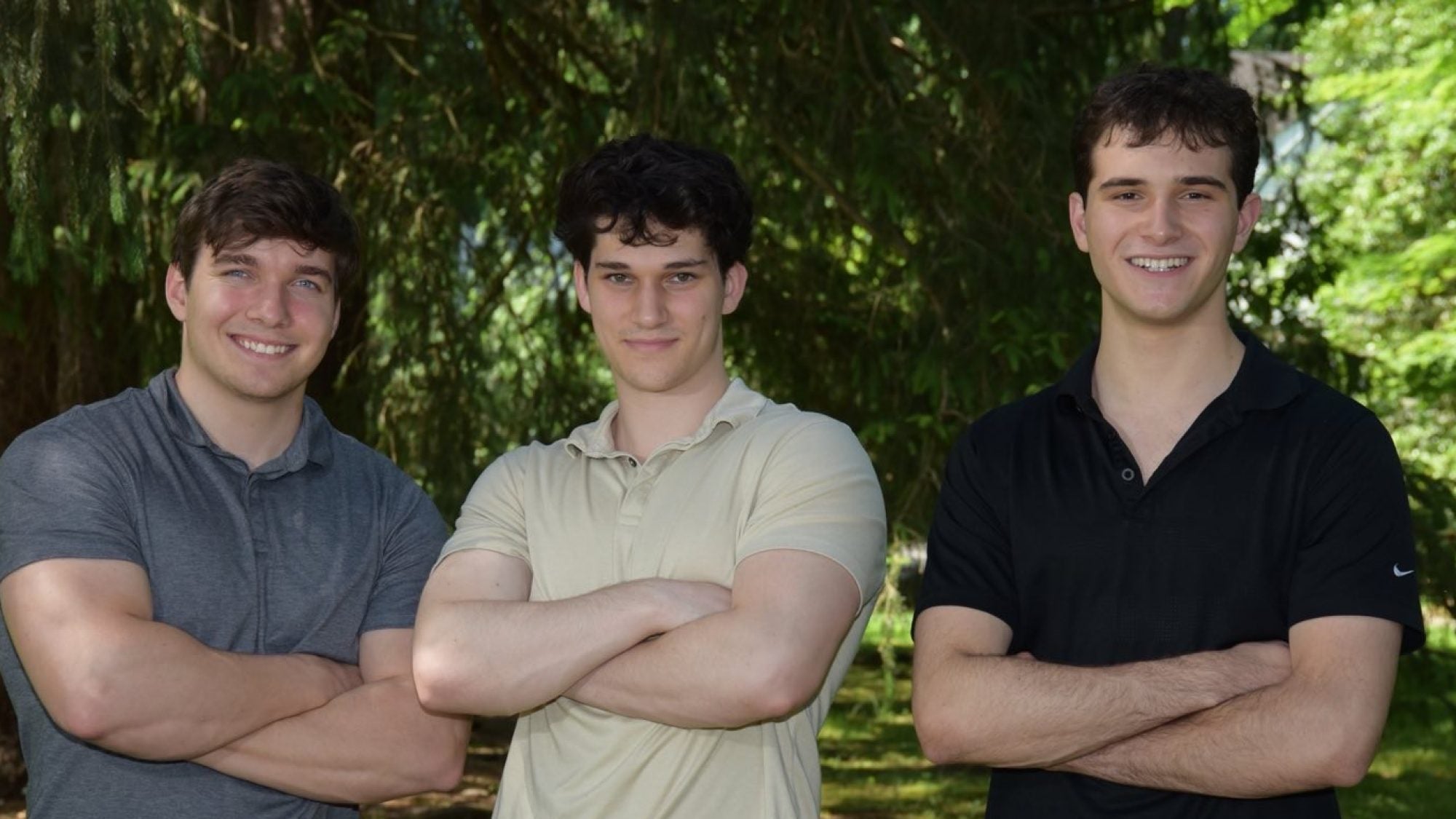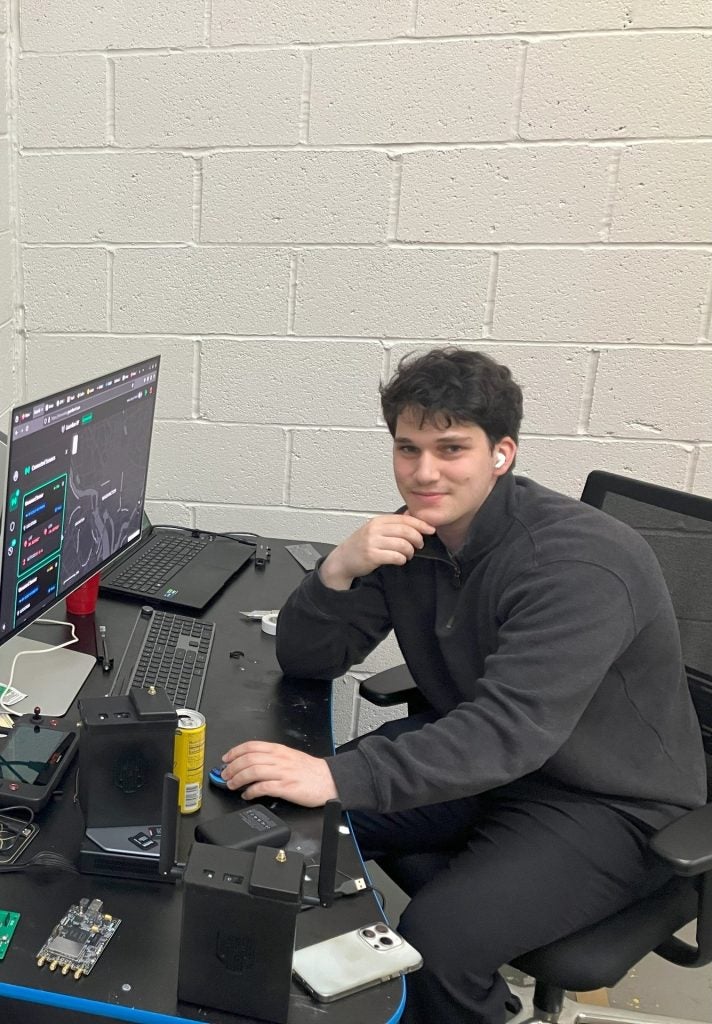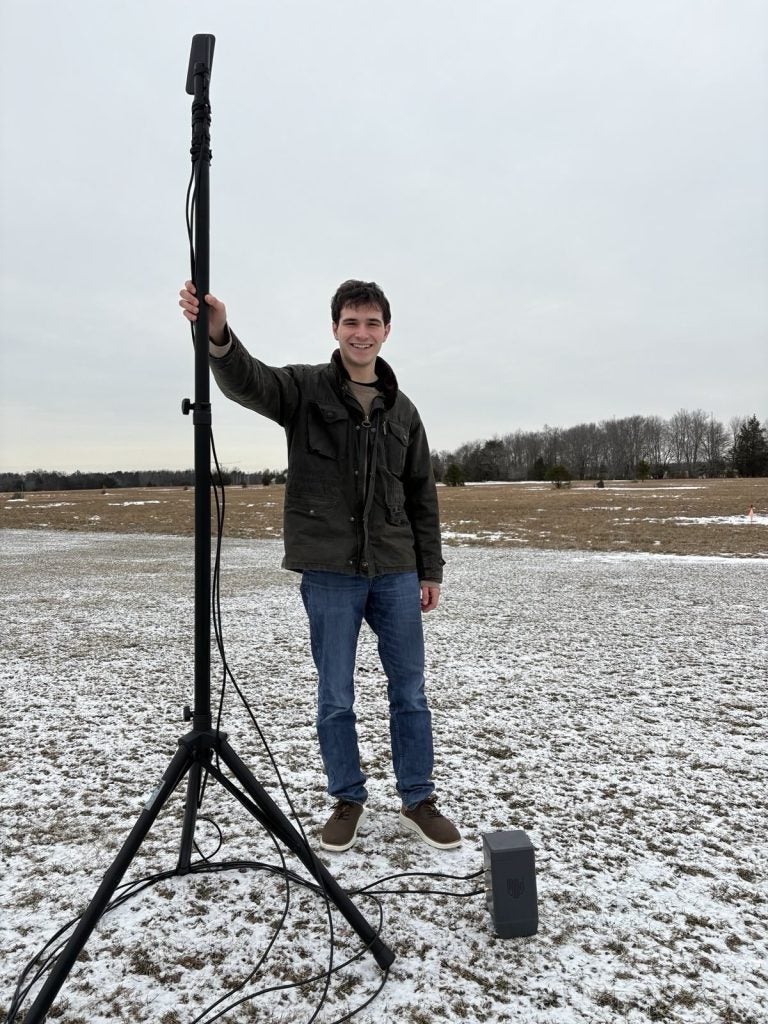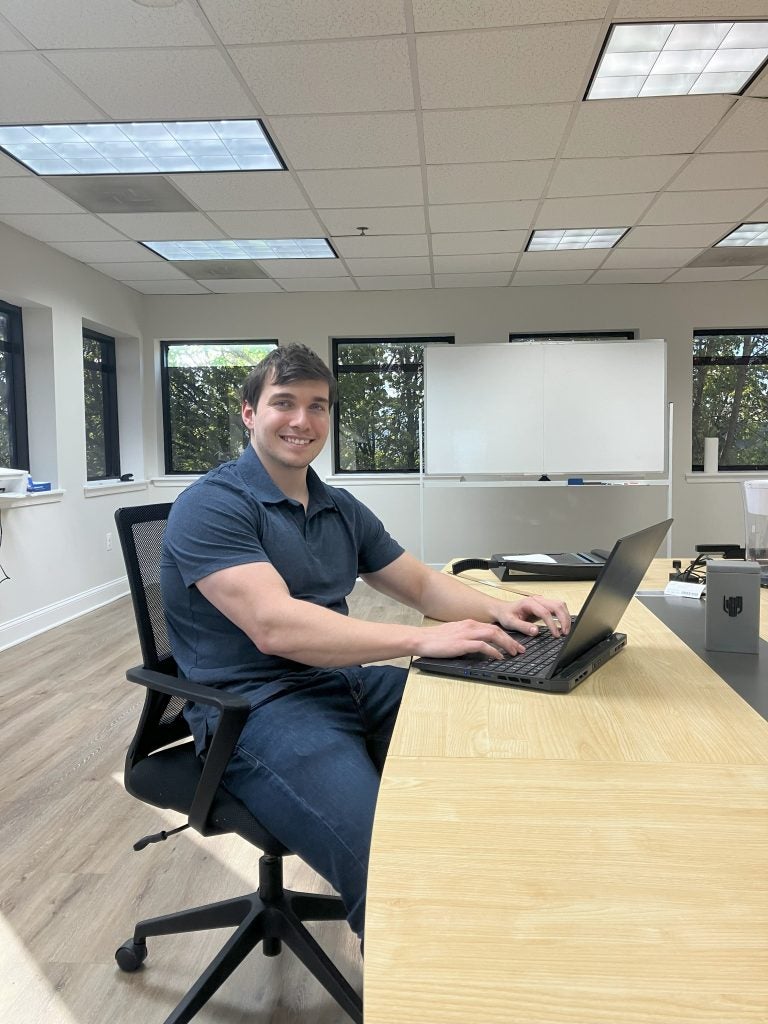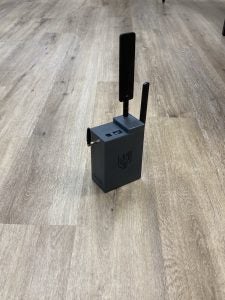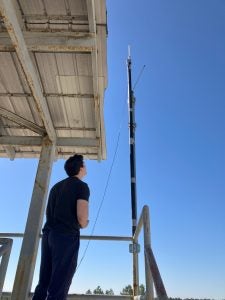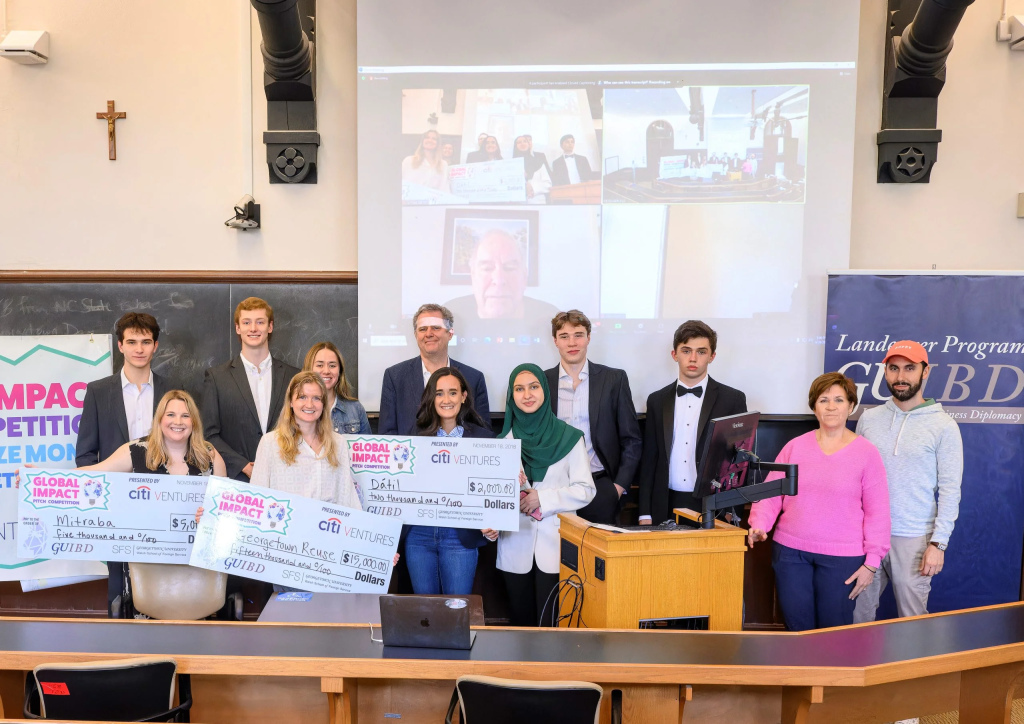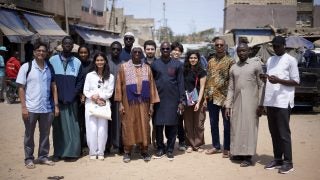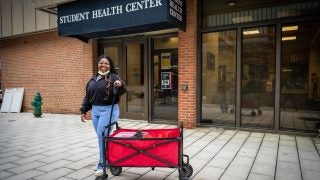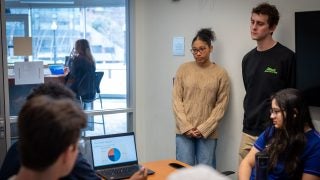John Andrzejewski (C’25), Eli Kerstein (C’24) and Lucas Raskin were Georgetown physics majors interested in signal processing when they got an opportunity to work together on a project.
Classmates from the School of Foreign Service — Rasmus Dey Meyer (SFS’25) and Nathaniel Salander (SFS’25) — organized a defense technology hackathon in El Segundo, California, and invited the three friends to compete.
Little did they know that the opportunity would alter their professional futures and put them at the forefront of global politics and emerging technologies.
Going up against some of the brightest minds in technology and engineering, they entered the competition as a shot in the dark, Raskin said. They thought they wouldn’t make it far and even forgot to name their team, hastily calling themselves Georgetown Physics.
In the 24-hour competition, they spent day and night coding their project — a piece of software that uses proprietary signal processing to detect drones and their operators.
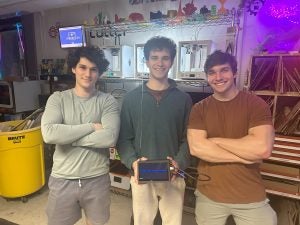
“These [other competitors] go to MIT and Caltech. There was no way we were going to do well at this event. Then the morning comes around, we’d been up for 20 hours at this point, and they’re like, ‘You guys are in the finals,’” Andrzejewski said. “We couldn’t believe it. That was the moment it started to feel real. I felt like I was dreaming.”
After their underdog win, their venture has transformed into a bustling startup they’ve named Guardian RF, a company that specializes in drone detection technology.
“When you get an opportunity like this and get to work with people you trust as we have, you take it,” Raskin said.
A New Front in Drone Technology
Before the competition, the three physics students thought they knew where their careers were headed. A finance career for Andrzejewski. A telecommunications role for Raskin. And government work for Kerstein.
The hackathon changed everything for them. When they returned from California, the three friends wanted to turn their lines of code into a commercial product. They applied to Y Combinator, a San Francisco-based startup accelerator program, and were told that they needed hardware to commercialize their product.
The Hoyas pulled three all-nighters in a row to get it done, crowding around blackboards in empty classrooms in Walsh Hall to build their hardware — all during finals week at Georgetown.
